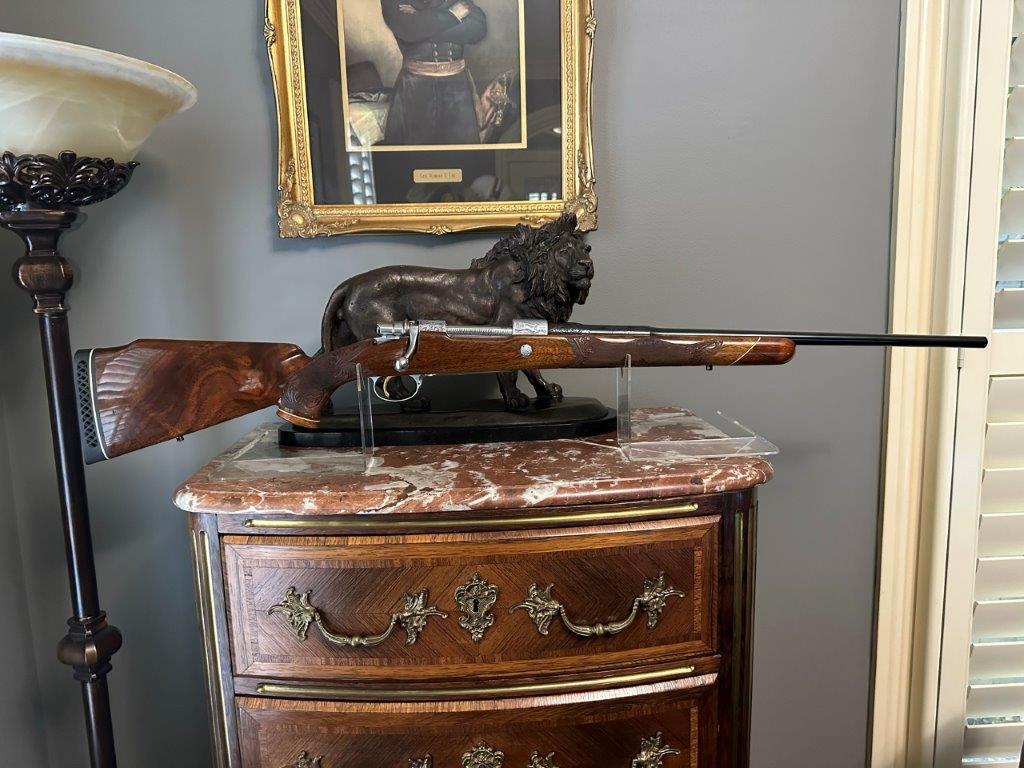Bolt action rifles have a rich history that intertwines with the development of modern firearms and the evolution of military tactics. This essay will delve into the origins and progression of bolt action rifles, highlighting some of the most prominent examples along the way.
Origins and Early Development
The bolt action mechanism, characterized by its manual operation where the shooter opens and closes the breech with a small handle, emerged in the early 19th century. The early iterations were primarily single-shot weapons and were a significant departure from the muzzle-loading rifles that dominated the era.
One of the earliest bolt action rifles was the Dreyse Needle gun, developed by Johann Nikolaus von Dreyse in the 1830s. This Prussian rifle was one of the first to use a bolt action and was a significant step forward in firearms technology. It played a crucial role in the Austro-Prussian War of 1866, demonstrating the effectiveness of bolt action designs on the battlefield.
Advancements and Widespread Adoption
The success of the Dreyse Needle gun spurred further innovation. The Mauser company, founded by Wilhelm and Peter-Paul Mauser, became a leading figure in bolt action rifle design. Their Mauser Model 1871, a single-shot rifle, was the first in a long line of successful Mauser designs.
However, it was the Mauser Model 1898, commonly known as the Gewehr 98 or G98, that set a new standard for bolt action rifles. It featured a controlled round feed, a powerful 7.92×57mm Mauser cartridge, and a five-round internal magazine. The G98 and its variations saw extensive use in both World Wars and influenced numerous other military rifles.
Iconic Bolt Action Rifles
- 1. Lee-Enfield (United Kingdom): The Lee-Enfield series, particularly the SMLE (Short Magazine Lee-Enfield) Mk III, was a staple of the British and Commonwealth forces. It was renowned for its 10-round magazine and smooth action, which allowed for rapid firing known as the "Mad Minute."
- 2. Mosin-Nagant (Russia/Soviet Union): The Mosin-Nagant, developed by Sergei Mosin and Léon Nagant, was the standard Russian rifle from the late 19th century through WWII. Notable for its ruggedness and reliability, it was produced in vast numbers and used in various conflicts.
- 3. Springfield M1903 (United States): The M1903 Springfield, influenced by the Mauser design, was a standard-issue rifle for the U.S. military in WWI and saw limited use in WWII. It was prized for its accuracy and was also a popular sporting rifle.
- 4. Karabiner 98k (Germany): A shorter version of the G98, the Kar98k was the standard German infantry rifle in WWII. Known for its robustness and effective range, it played a pivotal role in the conflict.
Impact on Warfare and Legacy

Bolt action rifles profoundly influenced military tactics and marksmanship. They allowed for greater accuracy and longer effective ranges compared to earlier rifle designs, leading to changes in infantry tactics. Sniper warfare also evolved, with bolt action rifles becoming the preferred choice for precision shooting due to their reliability and accuracy.
The legacy of bolt action rifles extends beyond military use. They have been popular in hunting and sport shooting due to their simplicity, reliability, and accuracy. The fundamental design of bolt action rifles has seen little change over the years, a testament to its effectiveness.
In conclusion, the development of bolt action rifles marked a significant milestone in firearm history. From the early Dreyse Needle gun to the iconic Mauser, Lee-Enfield, Mosin-Nagant, Springfield, and Kar98k, these rifles have played crucial roles in shaping military history and have left a lasting impact on both warfare and civilian shooting sports. Their simplicity, reliability, and precision continue to make them popular choices even in the modern era.

